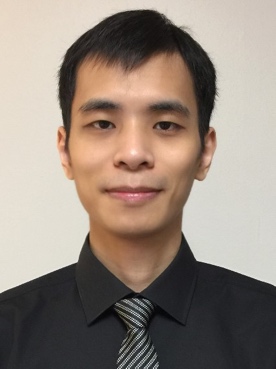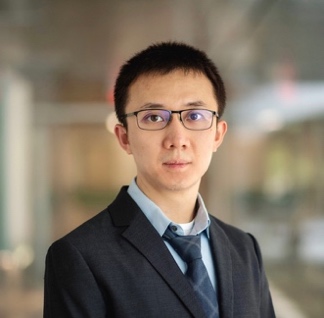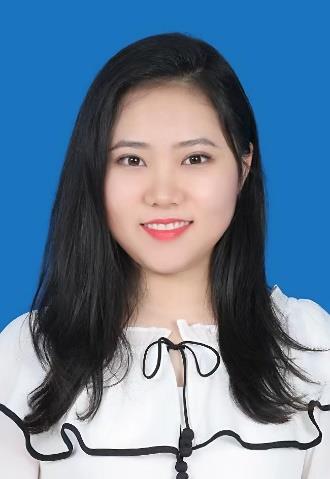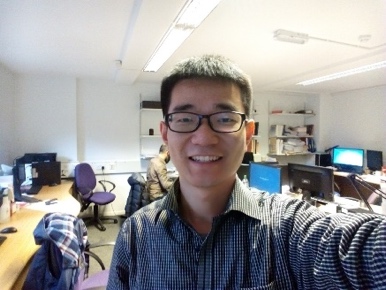2021年海外优秀青年学者论坛
东南大学自动化学院主办 东南大学卓越引智计划资助
第一场
时间:2021年12月16日(星期四)上午08:30-12:00 腾讯会议:315 438 792
第二场
时间:2021年12月16日(星期四)下午17:00-21:00 腾讯会议:893 608 820
第一场议程安排 腾讯会议:315 438 792
时间 | 报告人 | 报告人单位 | 报告题目 |
08:30-08:40 | 魏海坤/汪峥 | 东南大学 | 欢迎辞/东南大学自动化学院简介 |
08:40-09:20 | 孙举 | 明尼苏达大学 | Deep image prior: the untold stories |
09:20-10:00 | 沈杰 | 斯蒂文斯理工学院 | Algorithmic Robustness in Classification |
10:00-10:40 | 曲庆 | 密歇根大学 | Robust Learning Overparameterized Models without Overfitting: Implicit Bias and Subgradient Methods |
10:40-11:20 | 朱志辉 | 丹佛大学 | Geometric Analysis of Neural Collapse with Unconstrained Features |
11:20-12:00 | 冯佳时 | 字节跳动 | Recent Advance in Deep Learning Models for Visual Recognition |
第二场议程安排 腾讯会议:893 608 820
时间 | 报告人 | 报告人单位 | 报告题目 |
17:00-17:10 | 魏海坤/汪峥 | 东南大学 | 欢迎辞/东南大学自动化学院简介 |
17:10-17:50 | 葛浦东 | 伦敦帝国学院 | A Resilience-Oriented Centralised-to-Decentralised Framework Design for Networked Microgrids Control and Management |
17:50-18:30 | 赵雨琦 | 曼彻斯特大学 | Equivalent Modelling of Wind Farms for Probabilistic Harmonic Propagation Studies |
18:30-19:10 | 冯悦 | 伦敦大学学院 | Utilizing External Knowledge for Dialogue Response Generations |
19:10-19:50 | 肖博 | 伦敦帝国学院 | Intelligent Control Design and Artificial Intelligence in Medical Robotics |
19:50-20:10 | 易德威 | 阿伯丁大学 | Machine Learning Meets Robotics |
20:10-20:50 | 耿航 | 布鲁奈尔大学 | 基于深度学习的光电器件缺陷评估模型 |
Deep image prior: the untold stories
Abstract
Deep image prior (DIP) parametrizes visual objects as deep neural networks (DNNs). This stunningly simple idea has matched or even beaten the state-of-the-art methods on numerous visual reconstruction tasks, although not driven by massive amounts of training data. Despite the remarkable successes, the overparametrized DNNs used are typically powerful enough to also fit the noise besides the desired visual contents (i.e., overfitting), and the fitting process can take up to tens of minutes on sophisticated GPU cards to converge to a reasonable solution. In this talk, I’ll describe our recent efforts to combat these practicality issues around DIP, and how careful calibration of DIP models (or variants) can help to solve challenging visual reconstruction problems, such as blind image deblurring, in unprecedented regimes.
This is a joint work with my PhD students: Taihui Li, Hengkang Wang, Zhong Zhuang, Hengyue Liang, Le Peng, and Tiancong Chen.
Biography
Ju Sun is an assistant professor at the Department of Computer Science & Engineering, University of Minnesota, Twin Cities. His research interests span machine learning, numerical optimization, computer vision, healthcare, and adjacent fields. He leads the GLOVEX (Group of Learning, Optimization, Vision, healthcarE, and X, https://glovex.umn.edu/) at UMN. His current focus is to develop the theoretical and computational foundations of AI models and methods and use these to tackle challenging problems in science, engineering, and healthcare. His group is especially fascinated by the prospect of transforming healthcare and medicine using AI and data science. They have been working closely with medical researchers to tame brain tumors, fight COVID-19, and improve trauma and critical care. Prior to this, he worked as a postdoc scholar at Stanford University (2016-2019), obtained his Ph.D. degree from Electrical Engineering of Columbia University in 2016 (2011-2016), and B.Eng. in Computer Engineering (with a minor in Mathematics) from the National University of Singapore in 2008 (2004-2008). He won the best student paper award from SPARS'15, honorable mention of doctoral thesis for the New World Mathematics Awards (NWMA) 2017, and AAAI New Faculty Highlight Programs 2021. 
Algorithmic Robustness in Classification
Abstract
Learning linear classifiers (i.e. halfspaces) is one of the fundamental problems in machine learning dating back to 1950s. In the presence of benign label noise such as random classification noise, the problem is well understood. However, when the data are corrupted by more realistic noise, even establishing polynomial-time learnability can be nontrivial. In this talk, I will introduce our recent work on learning with Massart that significantly advances the state of the art. In particular, for the Massart noise where each label is flipped with an unknown probability across the domain, we present the first polynomial-time algorithm that is robust to any noise rate < 1/2. The developed algorithm is active in nature, and is nearly label-optimal. Finally, I will discuss some important directions such as list-decodable classification, where the majority of the data are contaminated.
Biography
Dr. Jie Shen is an Assistant Professor in the Computer Science Department at Stevens Institute of Technology, and is also a faculty member of the Stevens AI Institute. The goal of his research is to understand fundamental limits of learning under real-world constraints such as limited availability of labeled data and the presence of high level noise, and to design efficient algorithms with provable guarantees. His recent works investigate interactive learning from untrusted data, where learning algorithms are involved in data acquisition for optimal data efficiency and robustness. Over the past few years, he has published around 20 papers in top machine learning conferences such as ICML, NeurIPS, and ALT, and has served as senior program committee member for IJCAI, program committee member/journal reviewer for ICML, NeurIPS, COLT, ICLR, AISTATS, AAAI, JMLR, ML, TIT, TPAMI, TSP, PR etc. He obtained his BS degree in Mathematics at Shanghai Jiao Tong University, and completed his Ph.D. in Computer Science at Rutgers University in 2018. He was a visiting scholar at National University of Singapore and Duke University. He received the NSF CRII award in 2020.
Robust Learning Overparameterized Models without Overfitting: Implicit Bias and Subgradient Methods
Abstract
Overparameterization, having more model parameters than the data, has recent;u been shown to be beneficial to the dominating performance of many machine learning tasks, such as low-rank matrix recovery and deep learning. However, overparameterization can lead to overfitting issues, especially when corruption presents. In this talk, I will present two methods for effectively dealing with overfitting: double overparameterization and subgradient methods with diminishing stepsizes. As illustrative examples, we will introduce the ideas on robust recovery of low-rank matrices from linear measurements, with no prior knowledge on the intrinsic rank. Moreover, empirically we show that the proposed approaches can also effectively learn robust deep image prior (DIP), that we can achieve robust recovery of natural images by over-parameterizing images with deep convolutional networks without overfitting. Finally, I will discuss the generality of these methods beyond the robust matrix recovery and DIP.
This is a line of joint work with Yudong Chen, Lijun Ding, Liwei Jiang, Yi Ma, Chong You, and Zhihui Zhu, based upon two NeurIPS papers.
Biography
Qing Qu is an assistant professor in EECS department at the University of Michigan. Prior to that, he was a Moore-Sloan data science fellow at Center for Data Science, New York University, from 2018 to 2020. He received his Ph.D from Columbia University in Electrical Engineering in Oct. 2018. He received his B.Eng. from Tsinghua University in Jul. 2011, and a M.Sc.from the Johns Hopkins University in Dec. 2012, both in Electrical and Computer Engineering. He interned at U.S. Army Research Laboratory in 2012 and Microsoft Research in 2016, respectively. His research interest lies at the intersection of foundation of data science, machine learning, numerical optimization, and signal/image processing, with focus on developing efficient nonconvex methods and global optimality guarantees for solving representation learning and nonlinear inverse problems in engineering and imaging sciences. He is the recipient of Best Student Paper Award at SPARS’15 (with Ju Sun, John Wright), and the recipient of Microsoft PhD Fellowship in machine learning.
Geometric Analysis of Neural Collapse with Unconstrained Features
Abstract
Neural collapse is an intriguing empirical phenomenon that Papyan, Han, and Donoho recently discovered. This phenomenon implies that (i) the class means and the last-layer classifiers all collapse to the vertices of a Simplex Equiangular Tight Frame (ETF) up to scaling, and (ii) cross-example within-class variability of last-layer activations collapses to zero. In this talk, we will study the problem based on a simplified unconstrained feature model. In this context, we show that the classical cross-entropy loss with weight decay has a benign global landscape, in the sense that the only global minimizers are the Simplex ETFs while all other critical points are strict saddles whose Hessian exhibit negative curvature directions. We also exploit these findings to improve training efficiency: we can set the feature dimension equal to the number of classes and fix the last-layer classifier to be a Simplex ETF for network training, reducing memory cost by over 20% on ResNet18 without sacrificing the generalization performance. We will also discuss similar results for the mean squared error (MSE) loss. (Joint work with Tianyu Ding, Xiao Li, Qing Qu, Jeremias Sulam, Chong You, and Jinxin Zhou.)
Biography
Zhihui Zhu is currently an Assistant Professor with the Department of Electrical and Computer Engineering, University of Denver, CO, USA. He was a Post-Doctoral Fellow with the Mathematical Institute for Data Science, Johns Hopkins University, from 2018 to 2019. He received his B.Eng. degree in communications engineering in 2012 from Zhejiang University of Technology (Jianxing Honors College), and his Ph.D. degree in electrical engineering in 2017 at the Colorado School of Mines, where his research was awarded a Graduate Research Award. His research interests include the exploitation of inherent low-dimensional structures within data and signals, and the design, analysis, and implementation of optimization algorithms for machine learning and signal processing.
Recent Advance in Deep Learning Models for Visual Recognition
Abstract
Convolutional Neural Networks (CNNs) have been dominating the deep learning model architecture design for many years. Recently, the transformer-based models, like Vision Transformers, have shown compelling performance with CNNs. In this talk, I will introduce the background on the vision transformers, discuss their inherent limitations and present improvements over the architecture design to improve their performance to beat CNNs. This talk will include our recent works on T2T-ViT, DeepViT and Vision Outlookers. This talk will be concluded by discussing some future directions on the deep learning models.
Biography
Dr. Jiashi Feng is currently a research scientist at ByteDance. His research areas include machine learning and their applications in computer vision and AI. His recent research interests include deep learning model design, 3D human modeling, and life-long learning methods. He received the best technical demo award from ACM MM 2012, best paper award from TASK-CV ICCV 2015 and best student paper award from ACM MM 2018. He is also the recipient of Innovators Under 35 Asia, MIT Technology Review 2018. He served as the area chairs for ACM MM 2017-2019, NeurIPS 2020, BMVC 2019-2020, and program chair for ICMR 2017.
A Resilience-Oriented Centralised-to-Decentralised Framework Design for Networked Microgrids Control and Management
Abstract
The energy source has been transforming from traditional fossil fuel-based power generations to distributed energy resources (DERs) driven by the development of low/zero-carbon societies. The increasing DERs, using the concept of microgrid (MG) provide more operational flexibilitycompared to the traditional centralised supply from the main grid, especially in terms of enhancing the resilience of power systems, e.g., Sendai MG and Roppongi Hills MG in response to the Great East Japan Earthquake, 2011. However, the management of growing DERs leads to a cyber-physical fusion of MG systems and increases the complexity of implementing information and communication infrastructure, which suffers from cyber-layer faults and attacks. For this reason, a resilience-oriented centralised-to-decentralised framework in response to cyber-physical contingencies is discussed here. In such a centralised-to-decentralised framework, the cyber-physical response, i.e., emergency MGs and dynamic device-to-device (D2D) communication, is pre-scheduled in the centralised controller and allocated to the local controllers for timely contingency response. The pre-scheduled D2D communication quantitatively optimises the non-negligible delays and guides the control law design.
Biography
Mr. Pudong Ge received the B.Eng. and M.Eng. degrees in electrical engineering from Nanjing University of Science and Technology, and Southeast University, Nanjing, China, in 2016 and 2019, respectively. He is currently a third-year PhD student in Control and Power (CAP) group at Imperial College London, London, UK. His research interests focus on distributed control algorithms and resilient control design of cyber-physical power systems with high penetration of inverter-based generation. He has published more than 10 SCI/EI papers, including 5 first-author papers on high-reputation international journals, and has participated in several international cooperation projects mainly funded by EPSRC, Royal Society, ESRC. 
Equivalent Modelling of Wind Farms for Probabilistic Harmonic Propagation Studies
Abstract
Decarbonisation requires increasing penetration of renewable energy sources into the electric power system. Such trend results in several challenges in power systems, among which we consider the problem of power system harmonic distortions that results in significant financial losses to both network operators and end users. To confront this problem, we firstly developed an equivalent model of wind farms (WFs) for probabilistic harmonic propagation and mitigation studies in power electronics (PE) rich transmission networks. Moreover, for the first time, we proposed the appropriate modelling ranges and distributions of the equivalent model parameters and then validated the equivalent model of the wind farms based on field measurements at the PCC bus. The proposed model has the potential of being used in large transmission or distribution system probabilistic harmonic propagation studies with higher efficiency and confidence to identify potential harmonic issues in the power electronics rich networks. If those issues are identified, detailed modelling of individual plant and network conditions is required for harmonic mitigation. However, in such cases the extent of network modelling can be substantially reduced.
Biography
Ms. Yuqi Zhao received the B.Eng. degree and the M.Sc. degree from the University of Manchester, Manchester, U.K., in 2018 and 2019, respectively, both in electrical and electronic engineering. Currently, she is a PhD student at the University of Manchester, UK. Her research interests cover the areas of power system harmonics, harmonic estimation using Artificial Neural Network techniques, renewable energy source (wind farms, PV plants), power electronic devices, power system modelling, Monte Carlo simulations, probabilistic/stochastic modelling of uncertainties, etc.
Utilizing External Knowledge for Dialogue Response Generations
Abstract
Dialogue response generation is the process of generating automatic text response as a reaction to the text input provided by a user. It is widely used in chatbots and virtual assistants. Real-life uses range from well-known all- purpose assistants like Siri, Alexa, Cortana, etc., to the more specialized ones like dialog agents helping lonely people. In
this talk, I will focus on the problems about utilizing external knowledge to improve natural language understanding ability, as well as the progress that we have made in these areas. I will describe the types of knowledge we can use in the dialogue system, which includes implicit knowledge, structured knowledge, and unstructured knowledge; I will also emphasize the importance of multiple knowledge syncretic in conversation AI systems.
Biography
Ms. Yue Feng is a second-year Ph.D. student in the Department of Computer Science at University College London, affiliated with the Web Intelligence Group of the Centre for Artificial Intelligence. Her research interests lie in the areas of information retrieval, natural language processing, and applications of machine learning. She has previously served in various academic services, including PC Member of SIGIR, ACL, EMNLP, WSDM, CIKM. She is also one of the recipients of Apple Scholars. 
Intelligent Control Design and Artificial Intelligence in Medical Robotics
Abstract
For the adequate medical robotics of the next generation, high-level control precision and autonomy are two of the most important requirements. In this speech, the techniques from intelligent control theory and state-of-the-art Artificial Intelligence will be presented for medical robotics applications. Learning from Demonstration is increasingly used for transferring operator manipulation skills to robots, such as robotic suturing and knot tying. In practice, it is important to cater for limited data and imperfect human demonstrations, as well as underlying safety constraints. Besides, the algorithms of Deep Reinforcement Learning can be utilized to further polish the acquired skills to surpass the level of the demonstration experts. Also, the precise robotic autonomous palpation based on machine learning approaches is presented. For the intelligent control of the medical robotics, the Interval Type-2 fuzzy systems and generative adversarial nets will be presented to model the complex kinematics and/or dynamics subject to uncertainties for the tendon-driven surgical instruments to achieve high-precision control objectives.
Biography
Dr. Bo Xiao received Ph.D. degree in Robotics (Control Sciences and Engineering) from the Department of Informatics, King's College London, U.K., in 2018. He is currently a research associate with the Hamlyn Centre for Robotic Surgery and the Department of Computing, Imperial College London, U.K. During the period 2017 to 2018, he worked as a research fellow at Advanced Robotics Centre and the Department of Biomedical Engineering, National University of Singapore, Singapore. His current research interests include medical robotics, learning from demonstration, robotic suturing, fuzzy-model-based control systems, interval type-2 fuzzy logic, polynomial control systems, machining learning and reinforcement learning. He has been the lead guest editor for IEEE Transactions on Fuzzy Systems and International Journal of Systems Science and the guest editor for IET Control Theory & Applications, Complexity and Mathematical Problems in Engineering. etc. He has served as an active reviewer for a number of peer-reviewed journals including IEEE Transactions on Fuzzy Systems, IEEE Transactions on Automatic Control, IEEE Transactions on Cybernetics, and IEEE/ASME Transactions on Mechatronics. 
Machine Learning Meets Robotics
Abstract
Machine learning (ML) is opening new opportunities in virtually all industries, plus making frequently used equipment more capable. Not surprisingly, machine learning is often applied to robots for improving their capability. This is because machine learning allows robots to learn from mistakes and adapt themselves in new environment and applications. Like human being gets smarter through experience, robotics applications may have the same ability through using machine learning. In this presentation, we will explore how machine learning is used in precision remote sensing (ML meets UAV), in autonomous robots (ML meets autonomous driving), in healthcare and wellbeing (ML meets computer vision), in decarbonisation and sustainability (ML meets electric vehicles), etc.
Biography
Dr Dewei Yi is now a UK Lecturer (permanent assistant professor equivalently) in Machine Learning, School of Nature and Computing Sciences, at University of Aberdeen (UoA), U.K. He received a PhD degree in the Department of Aeronautical and Automotive Engineering, Loughborough University, U.K. in 2018. He was awarded School Research Student Development Fund in 2017; From Jul/2019 to Jan/2020, Dr Yi worked as a research fellow of Warwick Manufacturing Group at University of Warwick. He is PI/Co-I for several research projects which are funded by Pump-prime fund and Marine Fund Scotland. He also participated in several ESPRC, STFC, and Innovate UK projects as a key participator. He has published about 20+ high-quality research papers including IEEE Transactions (7), Transportation Research Part C: Emerging Technology (1), Computer Networks (1). He has also established a stable collaboration with several universities and institutes such as University of Warwick, University of Glasgow, Loughborough University, Aberystwyth University, NIAB-EMR, CABI, NXP Semiconductors, Jaguar Land Rover, and AVL Powertrain Ltd. He is the director of MSc AI programme and liaison officer of DataLab, which is the government funding body in Scotland. In addition, he also serves research community actively as a reviewer for several international journals, such as IEEE-TIE, IEEE-TVT, IEEE-TITS, Transportation Research Part C, and Accident Analysis and Prevention, and top conferences, such as IJCAI, ITS, and ICUAS. He is an Outstanding Reviewer for Transportation Research Part C: Emerging Technology.
基于深度学习的光电器件缺陷评估模型
摘要
设备缺陷检测算法已在光电器件生产领域中广泛替代人工肉眼检测。然而,传统基于深度学习的光电器件缺陷检测方法仅着眼于器件本身的硬(物理)缺陷检测,缺乏对器件软缺陷(如器件参数不达标)的检测手段。同时,现有检测算法未能建立器件硬/软缺陷的完整评估模型,缺乏对缺陷产生机理的探究,难以通过缺陷检测结果来优化器件生产过程。本报告从光电器件生产的基本过程开始,逐一介绍各过程的重要性能参数,建立基于事件的参数关联算法,充分挖掘各参数与缺陷之间的对应关系。同时,基于多层感知神经网络和卷积神经网络,结合产品性能指标,设计产品缺陷预测算法,并将缺陷预测与外部资源、环境因素、客户需求、社会经济因素等有机整合,从而构建基于生产过程的缺陷评估模型,以实现按需优化的光电器件生产。
简历
耿航,英国布鲁奈尔大学研究员,毕业于西北工业大学,担任国际SCI期刊Computer Modeling in Engineering & Science、Journal of Electrical and Electronic Engineering编委,中国自动化学会控制理论专业委员会随机系统控制学组委员,国际电气电子工程师(IEEE)协会会员,中国自动化学会会员。目前主要研究方向为深度学习、大数据分析、信号处理、系统建模。



